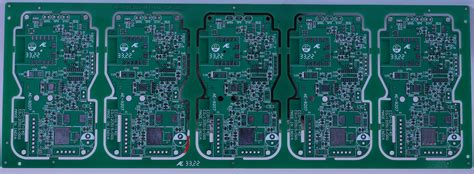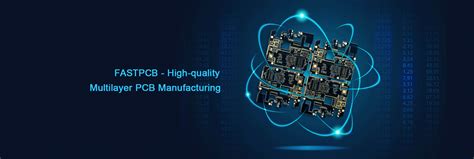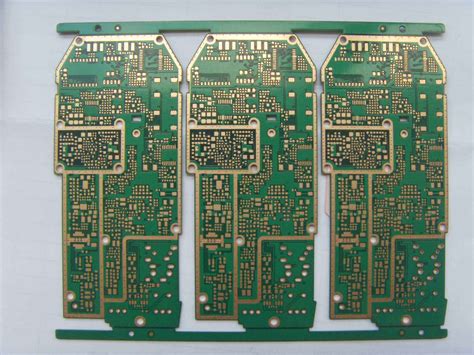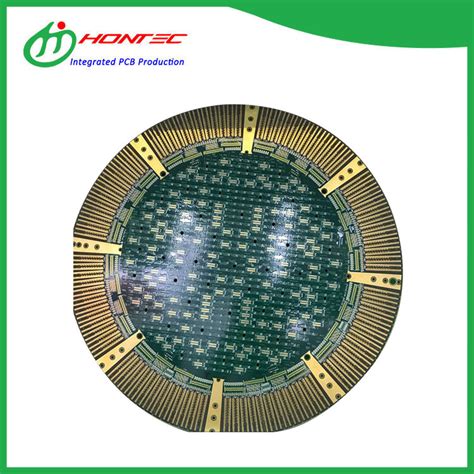DIY Multi-Layer PCB Solutions Without Professional Manufacturers

Key Takeaways
When exploring PCB manufacturing alternatives, you’ll discover that bypassing PCB manufacturing companies doesn’t mean sacrificing quality—it requires strategic planning. By adopting stacked-layer techniques and precision alignment methods, you can achieve functional multi-layer boards comparable to professional outputs. The PCB manufacturing cost savings here stem from leveraging accessible tools like CNC mills for layer patterning and heat presses for bonding, avoiding industrial-grade equipment.
For insulating layers, thermally cured adhesives or pre-coated dielectric films provide reliable separation between conductive traces. This approach mirrors processes used in the PCB manufacturing business, but with materials costing a fraction of commercial alternatives. To replicate blind/buried vias, consider mechanical drilling paired with conductive epoxy filling—a method validated in academic research for prototyping.
| DIY Technique | Commercial Equivalent | Cost Comparison |
|---|---|---|
| Stacked FR4 Layers | Professional Lamination | 60-70% Savings |
| Conductive Epoxy Vias | Laser-Drilled Microvias | 80% Savings |
| CNC Milling | Photolithography | 50-65% Savings |
While these methods reduce reliance on PCB manufacturing services, they demand meticulous calibration. For instance, layer alignment errors exceeding 0.1mm can compromise signal integrity. However, with practice, you’ll refine workflows to match low-volume production standards. The following sections detail how to implement these strategies, from adhesive selection to via fabrication, ensuring your DIY boards meet functional requirements without exceeding budget constraints.

DIY Multi-Layer PCB Stacking Techniques
Building multi-layer PCBs without relying on PCB manufacturing companies requires precision and an understanding of layer integration. Start by preparing individual double-sided boards, typically FR-4 sheets cut to identical dimensions. Use thermally stable insulating adhesives like polyimide films or prepreg materials to bond layers, ensuring uniform pressure during lamination to prevent air gaps. For alignment, create registration holes in all layers using a CNC drill or manual punch, then secure them with alignment pins.
Tip: For consistent layer registration, design a reusable alignment jig with guide pins matching your board’s hole pattern. This minimizes errors caused by manual positioning.
Unlike industrial PCB manufacturing processes involving vacuum presses, DIY lamination can be achieved with heated clamps or modified hydraulic presses. Gradually increase temperature to 180–200°C while applying 200–300 PSI pressure for 45–60 minutes. Post-lamination, drill through-holes using a carbide bit, but note that interlayer connectivity demands careful planning—blind/buried vias require pre-drilling inner layers before stacking.
While commercial PCB manufacturing cost structures benefit from bulk material discounts, DIY methods excel for prototyping. A 4-layer DIY stack costs ~60% less than outsourcing small batches, though surface finish quality may vary. For complex designs beyond 6 layers, consider hybrid approaches: outsource core layers from PCB manufacturing business services like Andwin PCB & Assembly, then add outer layers manually.
Critical challenges include managing thermal expansion mismatches and ensuring adhesive dielectric properties match your signal frequency requirements. Always test insulation resistance between power/ground planes post-stacking using a megohmmeter.
Insulating Adhesive Solutions for PCB Layers
When constructing multi-layer PCBs without relying on PCB manufacturing companies, selecting the right insulating materials becomes critical. Unlike industrial processes that use specialized laminates, DIY methods often employ epoxy-based adhesives or thermally conductive films to bond individual layers. These materials must provide electrical isolation while maintaining mechanical stability—a balance that directly impacts PCB manufacturing cost and long-term reliability.
Start by cleaning copper-clad boards with isopropyl alcohol to remove oxidation. Apply a thin, even layer of acrylic adhesive or polyimide film between layers, ensuring no air bubbles remain. For precise alignment, use registration pins or optical markers—a technique borrowed from professional PCB manufacturing workflows. Press the stack under weighted clamps or a modified laminator at 150–180°C for 10–15 minutes, depending on the adhesive’s curing requirements.
While commercial PCB manufacturing business operations use vacuum presses for void-free bonding, DIY alternatives include repurposing vacuum food sealers or hydraulic presses. Post-curing, verify insulation resistance with a multimeter (target >100 MΩ at 500V) to prevent interlayer shorts. This step is especially vital when replicating high-density designs typically handled by industrial manufacturers.
Cost-wise, adhesive solutions reduce PCB manufacturing cost by up to 70% compared to outsourcing 4-layer boards. However, trade-offs exist: hand-applied adhesives may introduce inconsistent thickness, affecting impedance control in high-frequency circuits. To mitigate this, consider laser-cut stencils for adhesive application or hybrid approaches combining bonded inner layers with professionally fabricated outer ones.
For thermal management, integrate ceramic-filled adhesives or boron nitride sheets between power planes—a hack rarely needed in standard PCB manufacturing but essential for DIY boards handling >5A currents. Remember, while industrial processes automate these steps, your success hinges on meticulous material selection and process repeatability.
This method bridges the gap between prototype experimentation and full-scale production, offering a viable path for projects where traditional PCB manufacturing companies can’t meet tight deadlines or niche requirements. Next, you’ll explore how CNC milling complements these adhesive techniques to finalize your multi-layer board.

CNC Milling Multi-Layer Board Tutorials
Creating multi-layer PCBs without relying on PCB manufacturing companies requires precision and the right tools. CNC milling offers a hands-on approach to bypass traditional PCB manufacturing cost barriers, especially for low-volume prototypes. Start by designing your board layout in CAD software, ensuring separate files for each layer. Export these as Gerber files, then use CAM software to generate toolpaths for your CNC machine.
When milling, use a 0.8–1.2 mm carbide endmill for trace isolation and a 2.0 mm drill bit for vias. Secure your substrate—typically FR-4 or polyimide—with double-sided tape or vacuum clamps to prevent shifting. Layer alignment is critical: employ registration marks or alignment pins to ensure all layers stack accurately. After milling the first layer, apply insulating adhesive (like epoxy or acrylic films) between subsequent layers, pressing them under moderate heat (60–80°C) to bond.
For via fabrication, drill holes through stacked layers using the CNC’s drilling function, then fill them with conductive ink or copper rivets. This mimics the plated via process used in commercial PCB manufacturing, albeit at a smaller scale. While professional PCB manufacturing business operations use laser drilling for microvias, a CNC setup can achieve 0.3–0.5 mm holes with careful calibration.
Cost-wise, this method slashes expenses by 40–60% compared to outsourcing, assuming you already own a CNC machine. However, tolerances (±0.1 mm) may lag behind industrial standards, making it ideal for academic projects or functional prototypes. Pair this with open-source PCB design tools like KiCad or FlatCAM to further reduce dependencies on proprietary PCB manufacturing workflows.
Transitioning to multi-layer builds requires patience—start with 2–4 layers to refine alignment and bonding techniques. In the next section, we’ll explore how to fabricate blind and buried vias without specialized equipment, expanding your DIY capabilities even further.

DIY Blind/Buried Via Fabrication Methods
Creating blind vias (connecting outer layers to inner layers) and buried vias (linking internal layers without surface exposure) is often seen as a task requiring specialized PCB manufacturing equipment. However, with precise planning and affordable tools, you can replicate these structures in DIY setups. Start by designing your layer stack-up in CAD software, marking via positions with laser-cut alignment markers to ensure layer-to-layer registration. For blind vias, use a modified CNC milling machine with a depth-controlled spindle to drill partially through the board, stopping at the target inner layer.
To insulate adjacent layers, apply thermoset adhesive films between copper-clad laminates during the stacking process. For buried vias, drill holes in individual inner layers before bonding, then align them during assembly. Fill the vias with conductive epoxy or micro-copper paste, curing them at 120°C for 15–20 minutes. This mimics the plating process used by PCB manufacturing companies but avoids the high PCB manufacturing cost of industrial electroplating baths.
A common challenge is achieving reliable electrical connections without professional via-in-pad plating. One workaround involves using micro-via stencils to deposit solder paste into drilled holes before reflowing. While this method sacrifices some density compared to commercial PCB manufacturing business standards, it suffices for prototypes or low-complexity designs. Pairing this with manual optical alignment tools (like microscope-mounted crosshairs) improves accuracy to ±0.1mm—adequate for most hobbyist applications.
By integrating these techniques, you bypass reliance on external fabrication services, though throughput remains limited. For multi-layer boards requiring dozens of blind/buried vias, consider hybrid workflows: outsource critical layers to reduce PCB manufacturing cost while handling less complex layers in-house. This balances quality control with budget constraints, a strategy increasingly adopted by startups navigating the competitive PCB manufacturing landscape.
Academic-Grade PCB Manufacturing Alternatives
When prototyping multi-layer boards, academic institutions and research labs often develop PCB manufacturing workflows that bypass traditional PCB manufacturing companies. These methods prioritize accessibility over mass production, offering solutions tailored to low-volume projects. By leveraging university lab equipment—such as precision laser cutters, controlled-environment ovens, and microscopy tools—you can achieve layer alignment tolerances under 50μm, rivaling commercial-grade standards at a fraction of the PCB manufacturing cost.
A key advantage lies in material innovation. Instead of relying on industrial-grade prepregs, academic approaches might use UV-curable adhesives or thermoplastic interlayer films to bond copper-clad laminates. These alternatives reduce dependency on specialized suppliers while maintaining dielectric properties suitable for sub-6GHz applications. For via formation, modified CNC mills with micro-drill bits (0.2–0.4mm) enable blind via creation without requiring the chemical plating processes typical of PCB manufacturing business operations.
Cost optimization extends to etching techniques. Labs often employ direct-write lithography systems, projecting circuit patterns onto photoresist-coated boards using programmable DLP projectors. This eliminates the need for physical photomasks, cutting material expenses by up to 70% compared to commercial batch production. However, these methods demand rigorous process documentation—maintaining detailed logs of layer alignment, curing times, and impedance testing becomes critical when replicating results.
While academic workflows won’t match the throughput of professional PCB manufacturing services, they provide unparalleled flexibility for experimental designs. You gain the ability to iterate rapidly, testing hybrid stackups combining FR-4 with flexible polyimide layers or embedding passive components between substrates—options often deemed impractical by cost-focused PCB manufacturing companies. By mastering these techniques, you transform institutional resources into a viable alternative to conventional supply chains, particularly for high-complexity, low-volume prototypes.

Bypassing Commercial PCB Manufacturer Dependencies
While PCB manufacturing traditionally relies on specialized PCB manufacturing companies, developing multi-layer boards independently allows you to circumvent logistical delays, minimum order requirements, and elevated PCB manufacturing cost. By adopting stack-and-bond techniques with off-the-shelf materials, you can prototype complex designs without outsourcing to a PCB manufacturing business. Start by aligning pre-etched double-layer boards using alignment pins, then apply thermally conductive insulating adhesives (like polyimide films) between layers. This method mimics industrial lamination processes at a fraction of the cost, though it demands precision in layer registration to avoid signal integrity issues.
For interconnects, replace plated through-holes with mechanical via alternatives—such as copper eyelets or conductive epoxy-filled holes—to create vertical connections between layers. Pair this with CNC-milled alignment markers to ensure layer coherence during bonding. While these approaches require more manual effort than automated PCB manufacturing, they eliminate dependencies on external lead times and NDA constraints. To further reduce costs, experiment with modified reflow ovens for controlled thermal pressing instead of industrial hydraulic presses.
However, recognize when hybrid strategies make sense: use DIY methods for prototyping but engage professionals for final production runs. This balances innovation with scalability, ensuring you’re not overcommitting resources to untested designs. By mastering these techniques, you retain control over timelines and intellectual property—a critical advantage in competitive hardware development cycles.
Cost-Effective Multi-Layer Assembly Strategies
When tackling PCB manufacturing for multi-layer boards, the key lies in optimizing material usage and process efficiency. While PCB manufacturing companies often rely on industrial-grade equipment, you can achieve similar results by strategically combining manual techniques with affordable tools. Start by selecting pre-made double-sided boards as your base layers—these eliminate the need for custom fabrication, reducing PCB manufacturing cost significantly.
Layer alignment becomes critical here. Use optical markers or precision-drilled guide holes to ensure registration accuracy when stacking boards. For insulation, opt for thermally stable adhesives like polyimide films, which provide reliable bonding without requiring specialized lamination presses. This approach avoids the bulk orders typically demanded by the PCB manufacturing business, letting you produce small batches economically.
To minimize drilling complexity, design your layout to maximize shared via connections across layers. Instead of outsourcing blind vias, create them manually by drilling partially through stacked boards before final assembly. Pair this with CNC milling for controlled depth routing, allowing you to expose inner-layer connections without costly laser systems.
Power distribution layers often consume excessive copper. Apply selective etching to remove unused areas, reducing material waste and chemical usage. For prototyping, substitute traditional solder masks with UV-curable resins—these cure rapidly under sunlight, bypassing the need for industrial curing ovens.
By integrating these strategies, you retain control over design iterations while sidestepping the lead times and minimum order quantities of commercial services. The result? A functional multi-layer PCB that meets academic or hobbyist standards at a fraction of professional PCB manufacturing expenses.
Chemical-Free PCB Etching Workarounds
When tackling PCB manufacturing at home, traditional etching methods often involve hazardous chemicals like ferric chloride or ammonium persulfate. However, you can achieve professional-grade results without these substances by adopting mechanical etching techniques. For instance, CNC milling machines equipped with micro-end mills carve copper traces directly from laminated boards, bypassing the need for chemical baths altogether. This approach not only eliminates toxic waste but also reduces PCB manufacturing cost by repurposing equipment you might already own for drilling or routing.
If you lack access to industrial-grade CNC tools, consider manual abrasive methods. Using a precision rotary tool with a diamond-tipped bit, you can selectively remove copper from pre-designed areas. Pair this with a stencil mask (created via toner transfer or UV exposure) to maintain trace accuracy. While slower than commercial PCB manufacturing companies’ processes, this method offers complete control over layer alignment—a critical factor when building multi-layer boards through DIY stacking.
Another innovative solution involves laser-assisted oxidation. Low-power CO₂ lasers can oxidize copper surfaces in predefined patterns, creating insulating barriers without physical material removal. When combined with PCB manufacturing business-grade design software, this technique achieves trace widths under 0.2mm, rivaling professional prototypes. Remember to factor in material compatibility: FR-4 substrates work best, while aluminum-backed boards may require power adjustments.
For via creation, replace chemical copper plating with conductive epoxy fills. After mechanically drilling holes, inject silver-loaded epoxy to establish interlayer connections. Though less durable than industrial plated vias, this workaround suffices for low-frequency prototypes and aligns with academic-grade PCB manufacturing standards. Always test conductivity across layers using a multimeter before final assembly to ensure signal integrity.
By integrating these methods, you reduce reliance on external PCB manufacturing companies while maintaining flexibility in design iterations—a key advantage when prototyping complex multi-layer systems.

Conclusion
While PCB manufacturing traditionally relies on specialized PCB manufacturing companies, your exploration of DIY multi-layer techniques reveals viable alternatives for prototyping and low-volume projects. By leveraging stacked boards, insulating adhesives, and precise CNC milling, you can achieve functional multi-layer designs without the overhead of PCB manufacturing cost associated with commercial services. These methods are particularly valuable for academic research, niche applications, or scenarios requiring rapid iteration.
However, it’s critical to recognize the trade-offs. Small-scale fabrication may lack the precision of industrial processes, and manual via creation introduces reliability challenges compared to professional PCB manufacturing business standards. For mission-critical designs or high-frequency applications, partnering with established manufacturers remains advisable. The key lies in balancing cost-efficiency with technical requirements—reserving DIY approaches for early-stage validation while reserving commercial services for finalized products.
As you refine these techniques, consider hybrid workflows: use homemade boards for preliminary testing before transitioning to professional fabrication. This strategy minimizes PCB manufacturing cost during development while ensuring end-product quality. Ultimately, mastering both DIY and commercial pathways empowers you to make informed decisions tailored to project scale, complexity, and performance demands.
FAQs
How does DIY multi-layer PCB creation compare to professional pcb manufacturing services?
While pcb manufacturing companies use industrial-grade equipment for precision, DIY methods leverage stacked boards and insulating adhesives to achieve functional prototypes. This approach significantly reduces pcb manufacturing cost but may require iterative testing for complex designs.
Can blind vias be fabricated without specialized machinery?
Yes, using mechanical drilling and conductive epoxy, you can create interlayer connections. Align layers precisely before bonding, then drill micro-vias through specific layers—a technique often taught in academic-grade PCB manufacturing alternatives.
What safety risks exist when bypassing pcb manufacturing business protocols?
Improper chemical etching or uncontrolled CNC milling dust pose health hazards. Always use PPE and follow academic lab safety guidelines, even when implementing chemical-free etching workarounds.
How many layers can realistically be achieved through DIY methods?
Most hobbyists successfully build 4-6 layer boards using pressure-sensitive adhesives and precision alignment jigs. Beyond this, pcb manufacturing processes become more efficient due to automated optical inspection systems.
Are DIY boards reliable for functional prototypes?
While suitable for low-frequency analog circuits or digital prototypes, DIY methods lack the impedance control and thermal management of professional pcb manufacturing companies. Stress-test all connections before deployment.
Explore Professional-Grade Alternatives
For projects requiring industrial precision or high-volume production, please click here to consult certified pcb manufacturing experts. Transition seamlessly from prototype to mass production while optimizing pcb manufacturing cost through scalable solutions.







